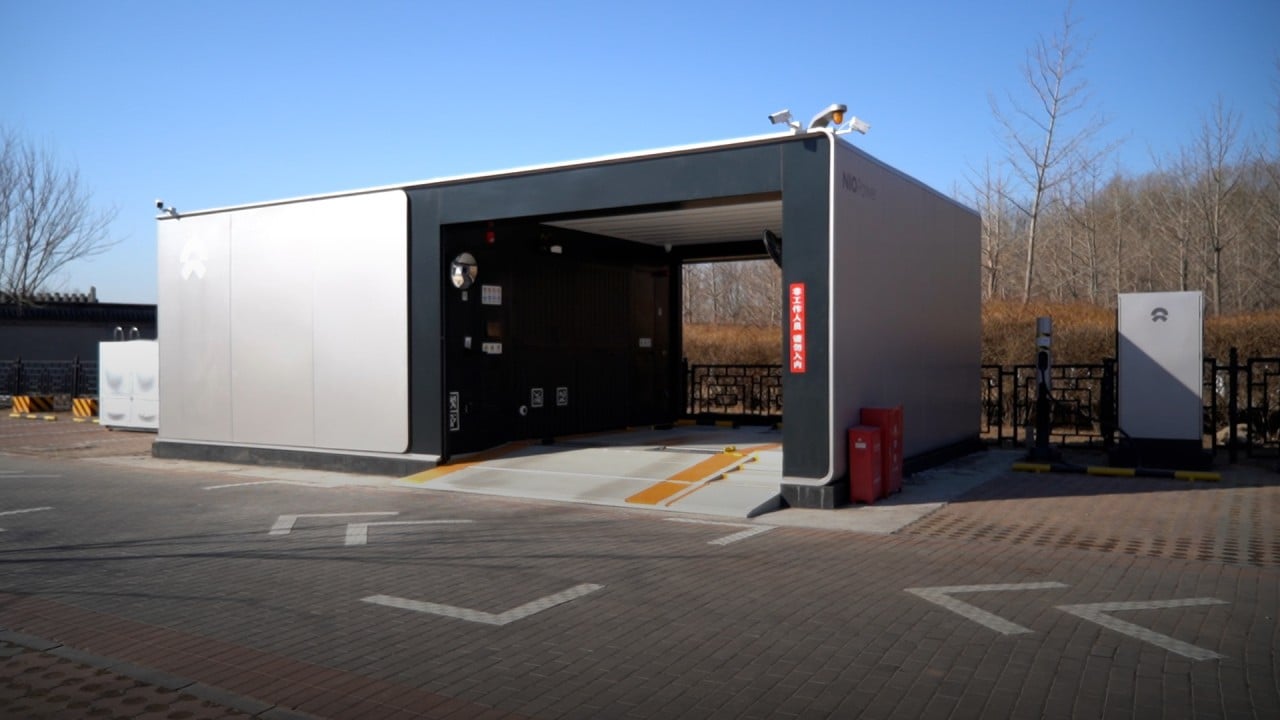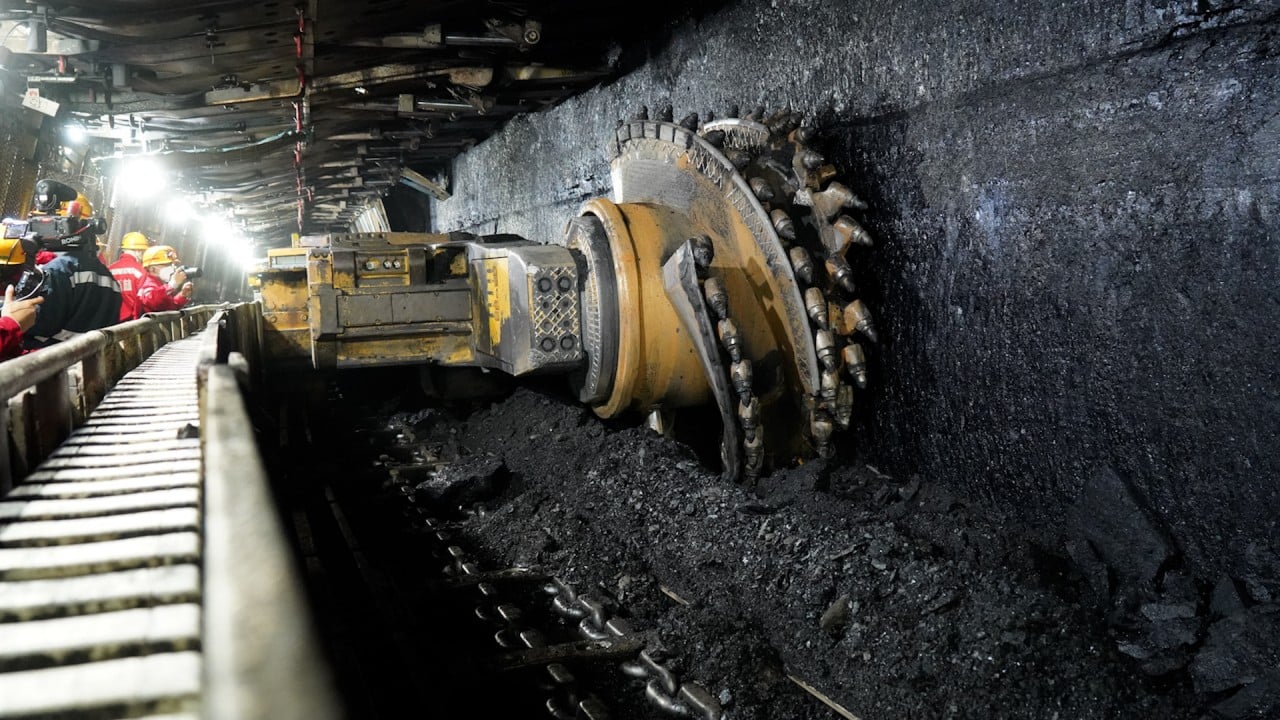
Is your made-in-China electric vehicle truly environmentally friendly?
- Emissions linked to EV batteries can be substantial, particularly batteries produced in coal-heavy China, Capital Economics analyst says
- EV and battery supply chains adopting renewable energy is key to EVs fulfilling their promise: Greenpeace East Asia
The short answer is yes. EVs do help bring down emissions as compared to conventional cars, but it gets complicated when considering emissions during an EV’s life cycle, from production and charging to disposal. It will take further decarbonisation throughout the EV and battery supply chains to fully realise EVs’ full green potential.
Emissions during an EV’s life cycle
EVs normally start their life with a higher “carbon debt” than internal combustion engine (ICE) vehicles, due to the additional emissions generated during the mining and refining of battery materials, such as nickel, cobalt and lithium, according to analysts. Emissions are also generated in the production of electricity in the country where the EV and its battery are made and charged.
“The emissions embodied in EV batteries can be substantial, particularly when it comes to batteries produced in coal-heavy China, where a sizeable chunk of battery metals are also currently refined,” David Oxley, head of climate economics at London-based economic research company Capital Economics, said in a report this month.
Why China will dominate green energy supply chain for the next decade
Due to the dominance of coal in China’s power grid, which accounts for more than 60 per cent of the power generated, producing one kilowatt hour’s worth of Chinese-made EV batteries will emit around 105kg of carbon dioxide-equivalent, according to the European Federation for Transport and Environment (T&E). This means a medium-sized EV produced in China currently starts life with a carbon debt almost twice that of an equivalent ICE vehicle, according to T&E.
Although EVs reduce emissions once they hit the road, as EV motors are much more efficient than conventional engines and use less energy per unit of distance driven, it still takes them around 5,000 to 60,000km of use to “repay” their carbon debt relative to an ICE car, according to T&E.
The speed of the repayment also depends on the carbon footprint of the electricity supply of the country in which the car is being charged. This means a made-in-China EV charged and operated in renewable-energy-heavy Sweden will repay its carbon debt at least three times faster than the same car running and being charged in coal-rich Poland.
Decarbonising EV supply chains
“Transitioning [EV and battery] supply chains to adopt renewable energy is key,” said Bao Hang, project leader in Beijing at environmental group Greenpeace East Asia. “Carmakers also need to improve technology to reduce consumption and increase the recycling rate of mineral resources to reduce reliance on primary raw materials.”
EV battery market seen facing further overcapacity as mega plant planned
From the perspective of emissions over a life cycle, an EV can reduce emissions throughout its lifetime by 25 to 45 per cent as compared with an ICE vehicle due to the energy saved while running, even if it is operated in coal-reliant China, according to Deloitte China. But a majority of the emissions generated by EVs come from their supply chains – 45 to 85 per cent of total emissions over an EV’s life cycle, according to an estimate by McKinsey.
“The emissions embodied in batteries could be reduced substantially if the batteries were made using a cleaner electricity mix and/or using minerals mined and refined in a less emissions-intensive way than is currently the norm in China,” said Capital Economics’s Oxley.
Could Chinese EV battery tech offer top-class service at fraction of cost?
According to Dennis Pan, a sustainability officer at CATL, the company generated 3.2 million tonnes of carbon dioxide last year from its direct power usage and bought energy, the so-called Scope 1 and 2 emissions, of which 88 per cent were associated with the manufacturing of battery cell products.
However, a larger share of the emissions came from the mining and processing of raw materials. “The emissions of battery production companies, that is, emissions from scopes 1 and 2, only account for about 15 per cent of the carbon footprint,” said Pan. “The carbon footprint of battery products mainly comes from Scope 3, that is, carbon emissions from the upstream.”
The Fujian province-based battery maker, which said it aims to achieve carbon neutrality in core operations by 2025 and across its battery value chain by 2035, is working on formulating standards to assess suppliers’ performance in sustainability, and recently developed the industry’s first audit toolkit for the lithium battery supply chain.
CATL is also working on increasing the use of low-carbon raw materials such as green aluminium and recycled materials such as nickel, cobalt and manganese in its supply chain. Its production plant in Yibin, Sichuan province achieved carbon neutrality in 2022 through the use of green electricity, intelligent energy management and electrification of transport, making it the first zero-emissions battery plant in the world.
BYD, which overtook Tesla to become the world’s largest EV manufacturer last year, is also adopting green logistics, and recycling retired batteries to support China’s 2060 carbon-neutral goal.
The Shenzhen-headquartered company said in 2021 that it will only sell new-energy cars and ditch ICE cars starting 2040.
Beijing WeLion, Chinese maker of 1,000km EV battery, plans IPO by 2025
“With the continuous development of the automobile industry, technology breakthroughs and the support of government policies, we believe more enterprises will use renewable energy in the production of EVs, use recyclable materials and increase power generation efficiency,” said Luo Hao, director of public relations at BYD.
Transitioning the electricity system towards clean energy and reducing China’s reliance on coal is also crucial for the decarbonisation of the EV supply chain.
“As the share of renewable energy continues to grow, the emission reduction effect of EVs will become more obvious,” said Pan from CATL.
The government needs to issue standards and guide manufacturers and raw material suppliers towards emissions reduction, according to Zhang Xiang, a visiting professor at the engineering department of Huanghe Science and Technology University.
“Due to the long and complicated supply chain in the EV industry, it’s beyond difficult to ask the companies involved to calculate their emissions and coordinate with upstream and downstream partners, as an EV sometimes has over 10,000 components,” Zhang said.
“Policymakers need to guide the industry towards decarbonisation while also making sure that the EV industry will continue to be an economic driver for the country.”




